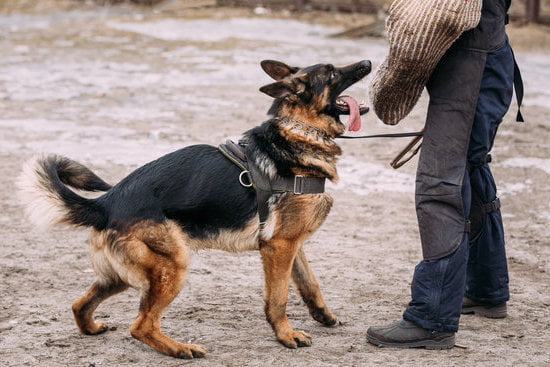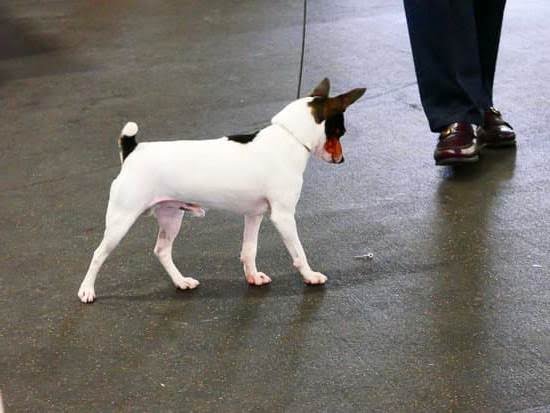Are you wondering how to train your dog to do paw? Teaching your furry friend to shake paw is not only a fun trick but also has practical benefits for both you and your pup. In this article, we will explore the importance of paw training for dogs and provide tips and techniques for successful teaching.
Understanding your dog’s behavior and body language is crucial when it comes to training, including teaching them to shake paw. By recognizing their cues and signals, you can effectively communicate with your dog and make the training process smoother. We will discuss how to interpret your dog’s body language and behavior in order to tailor your training approach to their individual personality.
In addition, we will cover basic training techniques and the importance of selecting the right treats and rewards for paw training. Whether you have a young puppy or an older dog, these fundamental principles are essential for successful paw training. So, if you’re ready to embark on a rewarding journey of teaching your dog new skills, continue reading for a step-by-step guide on how to train your dog to do paw.
Understanding Your Dog’s Behavior and Body Language
Dogs communicate with us through their body language, and understanding their behavior is key to successful training. When it comes to teaching your dog to shake paw, it’s important to pay attention to their natural instincts and movements. Many dogs naturally lift their paw when they want something or are asking for attention. By recognizing these cues, you can use them as a starting point for teaching them the “paw” command.
To train your dog to do paw, start by observing their body language. Look for moments when they naturally raise their paw, such as when they are excited or eager for a treat. Take note of these behaviors and use them to your advantage during training sessions. By building on your dog’s natural instincts, you can make the training process more intuitive and enjoyable for both you and your pet.
Additionally, understanding your dog’s behavior is essential for effective communication during training. Dogs respond well to positive reinforcement and clear signals. By learning how to interpret your dog’s behavior and body language, you can better gauge their responsiveness to the training and adjust your approach as needed.
| Behavior Cues | Training Tips |
|---|---|
| Natural paw raising | Use as a starting point for “paw” command |
| Excitement or eagerness | Utilize these moments for positive reinforcement |
| Clear signals of responsiveness | Adjust training approach based on body language cues |
Basic Training Techniques for Teaching Paw
When it comes to training your dog to do paw, it’s important to start with some basic training techniques that will help lay the foundation for this new command. Here, we’ll discuss some simple yet effective methods you can use to teach your furry friend how to shake paw.
Positive Reinforcement
One of the most important aspects of teaching your dog any new command is using positive reinforcement. This means rewarding your dog for displaying the behavior you want to encourage. When it comes to teaching paw, be sure to have plenty of treats on hand to reward your pup for lifting their paw.
Patience and Persistence
Training a dog takes time and patience, so be prepared to practice the “paw” command regularly with your furry friend. It’s also important to be consistent with your training efforts, as dogs thrive on routine and repetition. With patience and persistence, your dog will eventually understand what is expected of them.
Physical Guidance
Some dogs may need a little physical guidance in the beginning stages of learning how to shake paw. You can gently lift their paw and give the “paw” command at the same time. Over time, as they become more familiar with the command, they should start lifting their paw on their own in response.
By using these basic training techniques, you can effectively teach your dog how to do paw and set them up for success in mastering this fun trick. Remember to always be patient, positive, and consistent in your efforts, and soon enough, your canine companion will be offering you their paw on cue.
Choosing the Right Treats and Rewards for Paw Training
When it comes to training your dog, choosing the right treats and rewards can greatly impact the success of their learning. In the case of teaching your dog to shake paw, it’s essential to select treats that are not only appealing but also easy for your dog to consume quickly. These treats should be small, soft, and aromatic to capture your dog’s attention and motivate them during training sessions.
One approach is to use high-value treats such as small pieces of boiled chicken, cheese, or freeze-dried liver. These types of treats are often irresistible to dogs and can serve as a powerful motivator for them to perform the desired behavior. Additionally, it’s important to consider the nutritional content of the treats you’re using and adjust your dog’s daily food intake accordingly to prevent overfeeding.
In addition to choosing the right treats, using positive reinforcement in the form of verbal praise and physical affection can also be effective rewards for paw training. Dogs thrive on attention from their owners and will respond well to enthusiastic praise and gentle petting when they successfully shake paw. By combining edible treats with verbal praise and physical affection, you can create a comprehensive reward system that encourages your dog to actively participate in training sessions.
As you experiment with different treats and rewards during paw training, pay close attention to your dog’s response and adjust your approach accordingly. Every dog is unique, so finding the perfect combination of treats and rewards that resonates with your pet may require some trial and error. Ultimately, by understanding what motivates your dog and tailoring your reward system to their preferences, you can effectively teach them how to shake paw while strengthening the bond between you.
Step-by-Step Guide to Teaching Your Dog to Shake Paw
To teach your dog to shake paw, also known as giving a high five, you will need patience, consistency, and positive reinforcement. This trick is not only adorable but also provides mental stimulation for your furry friend. Here’s a step-by-step guide on how to train your dog to do paw:
- Start by getting your dog into a sitting position. Make sure you have their attention and hold a treat in your closed fist.
- Hold the treat just above their nose so they can smell it, then slowly move your hand towards their paw. As they lift their paw to touch your hand, say the command “shake” or “paw” and immediately reward them with the treat.
- Repeat this process several times until they start lifting their paw on command without the treat being present. It may take some time for them to understand the command, so be patient and consistent with your training.
- Once they consistently offer their paw when you give the command, start adding a verbal cue such as “good girl/boy” or “yes” before giving them the treat. This will help reinforce the behavior even further.
- Gradually increase the difficulty by asking them to hold their paw up for longer periods before receiving the treat, or even asking them to switch paws when offering a shake.
Remember that every dog learns at its own pace, so it’s important to be patient and encouraging throughout the training process. Keep training sessions short and fun, and always end on a positive note with plenty of praise and rewards for good behavior.
Troubleshooting
When teaching your dog to do paw, you may encounter some common challenges along the way. It’s important to understand these challenges and have a plan to overcome them in order to successfully train your dog. Here are some of the common challenges you may face and how to address them:
1. Lack of Interest: Some dogs may show a lack of interest in learning the paw command. This can be due to various reasons such as fatigue, distraction, or even discomfort. To overcome this challenge, try to make the training sessions short and engaging. Use high-value treats or toys to capture your dog’s attention and keep them motivated. Additionally, choose a quiet and familiar training environment to minimize distractions.
2. Fear or Anxiety: Some dogs may feel fearful or anxious when attempting to shake paw. This could be due to past negative experiences or simply a lack of confidence. To help your dog overcome this challenge, start by building trust and creating a positive association with the training process. Use positive reinforcement techniques such as praise, treats, and gentle encouragement to boost your dog’s confidence.
3. Inconsistency: Inconsistency in training can lead to confusion for your dog and slow down the learning process. It’s important to be consistent with your commands, timing, and rewards when teaching paw. Create a clear routine and stick to it during every training session. Consistency will help your dog understand what is expected of them and reinforce their learning effectively.
By understanding these common challenges and implementing strategies to overcome them, you can make the paw training process smoother and more successful for both you and your furry friend.
- Use high-value treats or toys
- Create a quiet training environment
- Build trust through positive reinforcement
- Be consistent in your commands and rewards
The Benefits of Teaching Your Dog to Shake Paw
Teaching your dog to shake paw is not just a cute trick, but it can also have many benefits for both you and your furry friend. One of the main benefits is the mental stimulation it provides for the dog. Learning a new command and performing it on cue can help keep your dog’s mind sharp and engaged. This can be especially beneficial for high-energy breeds that need regular activities to keep them mentally and physically stimulated.
Additionally, teaching your dog to shake paw can also strengthen the bond between you and your pet. Training sessions provide an opportunity for quality time together, building trust and communication between you and your dog. Positive reinforcement during training also fosters a sense of teamwork and cooperation, which can enhance your relationship with your pet.
Moreover, teaching your dog to shake paw can be a great way to improve obedience and impulse control. By learning to perform a specific action on command, your dog will become more responsive and attentive to your cues in other situations as well. This can be particularly useful in managing behavior issues such as jumping up on people or excessive barking.
| Benefits | Explanation |
|---|---|
| Mental stimulation | Teaching a new command keeps the dog’s mind engaged. |
| Bonding | Training sessions build trust and communication between owner and pet. |
| Obedience | Learning commands improves responsiveness and impulse control. |
Advanced Paw Training Techniques for Dogs With Prior Obedience Training
Fine-Tuning the Paw Command
For dogs with prior obedience training, they may already have a solid understanding of basic commands such as sit, stay, and come. To advance their paw training, start by fine-tuning the paw command. This involves reinforcing the action with increased duration, distance, and distractions.
Begin by giving the command for paw and requiring your dog to hold the position for a longer period before receiving the treat. Gradually increase the distance between you and your dog when giving the paw command to build their focus and understanding.
Adding Variety to Paw Training Exercises
Once your dog has mastered the basic paw command, it’s important to keep them engaged and challenged. One way to do this is by adding variety to paw training exercises. Consider incorporating different surfaces or textures for your dog to place their paw on, such as a rough mat or a smooth platform. This will not only reinforce the paw command but also enhance your dog’s adaptability in responding to different environments.
Combining Paw Training With Other Advanced Commands
Building on your dog’s prior obedience training, you can integrate paw training with other advanced commands for a more dynamic learning experience. For example, incorporate the “high five” command into your training sessions, where your dog raises both paws instead of just one.
Additionally, you can teach them to switch between commands seamlessly, such as going from shaking paw to lying down on cue. By combining these advanced commands, you are not only furthering their obedience skills but also strengthening their mental agility and focus.
Conclusion
In conclusion, teaching your dog to do paw is not only a fun trick, but it also strengthens the bond between you and your furry friend. By understanding your dog’s behavior and body language, using basic training techniques, and choosing the right treats and rewards, you can successfully teach your dog to shake paw.
Remember that patience and consistency are key when training your dog. It may take time for them to understand what you want them to do, so be sure to celebrate every small achievement along the way.
The benefits of teaching your dog to shake paw go beyond just learning a new trick. It can help improve their focus and obedience while providing mental stimulation. Additionally, it is a great way to enhance communication between you and your pet. By celebrating your dog’s achievement through training, you are reinforcing positive behavior and building a stronger connection with them.
For those who have already mastered basic obedience training with their dogs, there are advanced paw training techniques that can further challenge and stimulate their minds. Offering variety in training sessions will keep your dog engaged and excited to learn more tricks.
Remember that the goal of training should always be to create a positive experience for both you and your furry companion. So keep practicing, celebrating every success, and enjoy the special bond that comes from training your beloved pet.
Teaching your dog to do paw is not only about performing a simple trick; it is about building trust, strengthening communication, and fostering a deeper connection with them. By taking the time to train our dogs, we are giving them the opportunity to learn new behaviors and challenging their minds, resulting in happier and healthier pets.
Now that you have the tools and knowledge on how to train your dog to do paw, get started on this exciting journey of bonding through training.
Frequently Asked Questions
How Do I Teach My Dog to Give Me His Paw?
Teaching a dog to give you his paw involves using positive reinforcement techniques. Start by getting your dog’s attention and then gently lift his paw while giving the command “paw” or “shake.” Reward your dog with a treat and praise when he lifts his paw.
How Long Does It Take to Teach a Dog to Give Paw?
The time it takes to teach a dog to give paw can vary depending on the individual dog and how consistently you work on the training. Some dogs may pick up the behavior in a few training sessions, while others may take longer. Patience and consistency are key in teaching this trick.
What Age Should a Puppy Learn Paw?
Puppies can start learning how to give paw as early as 8 weeks old when they are beginning to master basic commands and behaviors like sit and stay. However, it’s important to keep training sessions short and positive, as young puppies have shorter attention spans. Gradually introduce the “paw” command as part of their training routine.

Welcome to the blog! I am a professional dog trainer and have been working with dogs for many years. In this blog, I will be discussing various topics related to dog training, including tips, tricks, and advice. I hope you find this information helpful and informative. Thanks for reading!





